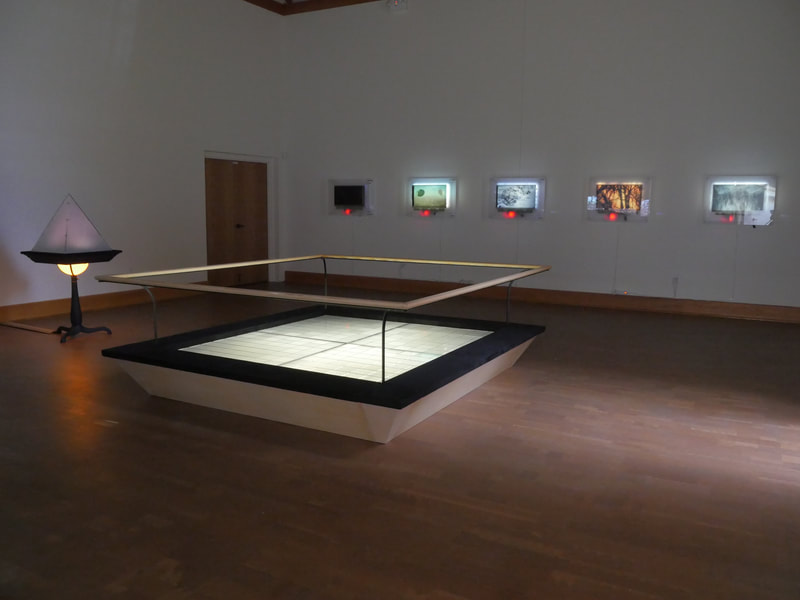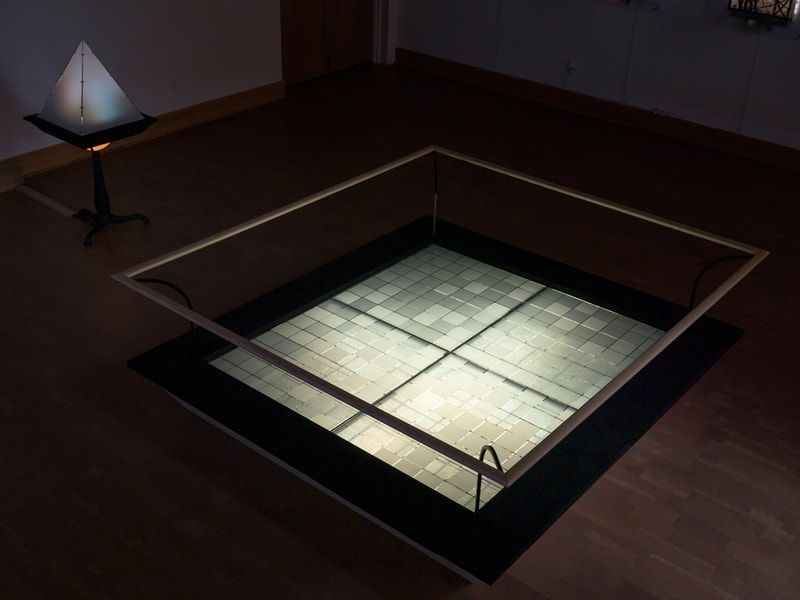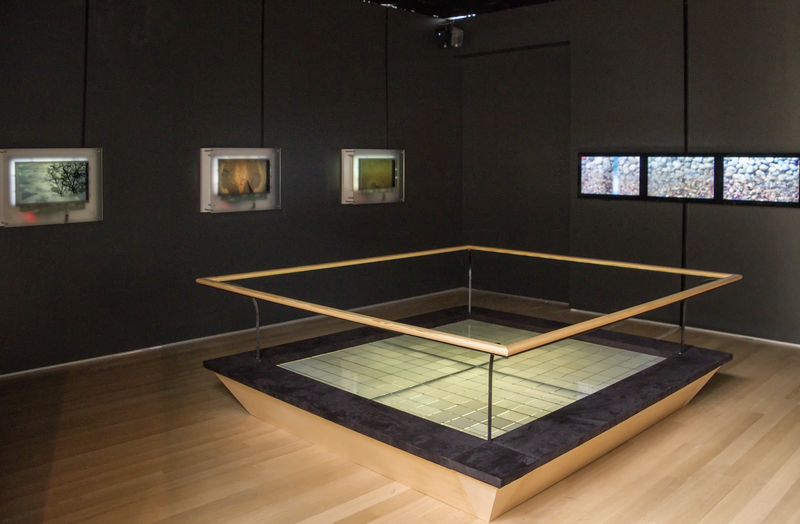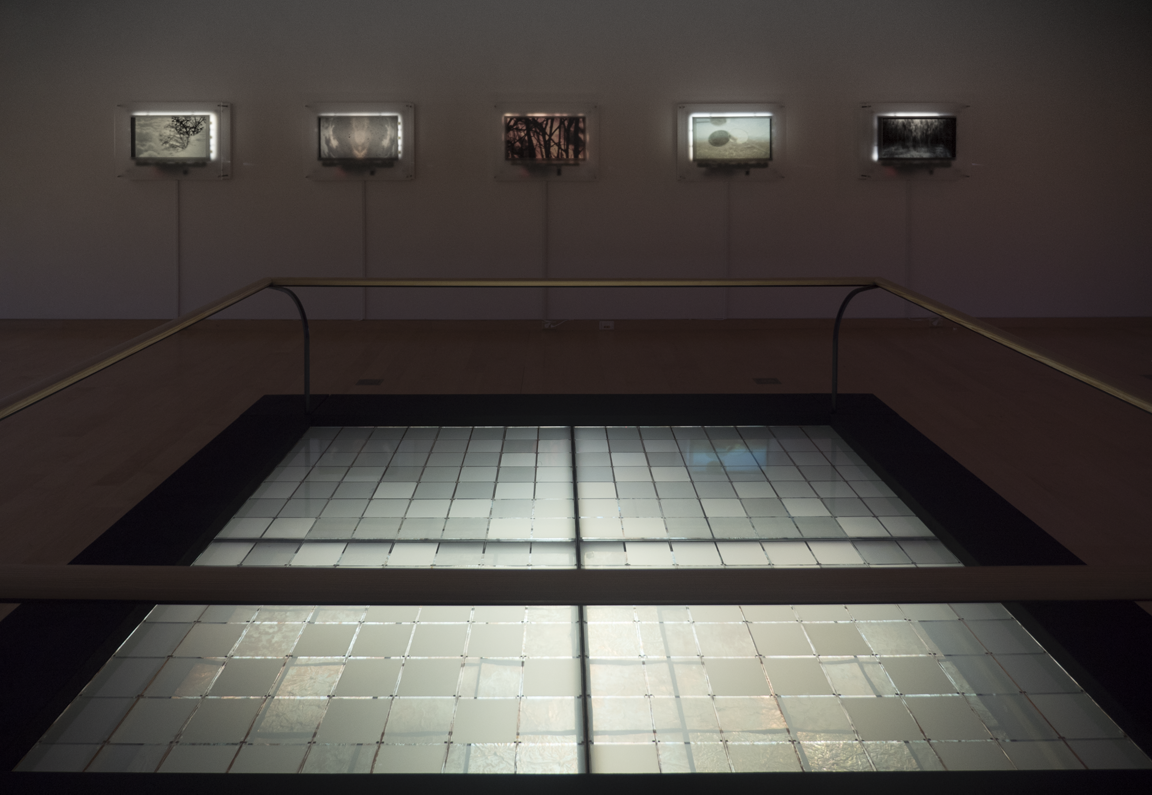Host is the title of an interactive sculptural new media project that has been the anchor for several exhibitions. It was part of the exhibition: Connectivity: Technology and the Natural World" at the Eric Dean Gallery in Crawfordsville, Indiana in 2014 (pictured below) and at the Peeler Visual Arts Gallery at DePauw University in Greencastle, Indiana in 2015. at the Gund Gallery, Gambier, Ohio in January 2015.
The project uses Polymer Dispersed Liquid Crystal film to obscure and reveal a human-made landscape. Glass panels that hold the film lie horizontally on a structure that mimics an observation station for natural wonders. Here the gridded landscape is made of copper, a diminishing resource, topographically embossed to reference the miniaturization observed when flying over land. Railings remind the viewer of their status as an outsider, an observer. The piece calls into question how much control humanity can exert on this vastness while simultaneously using its assets.
Host exhibits a random on/off pattern with the four inch pixels until a visitor walks around the structure. A motion sensor triggers a rough moving image that visualizes the origin of the universe, as cosmic bubbles erupt clearing the PDLC film. The video is a simulation from Tom Giblin’s research who collaborated with me on this project with technical and conceptual support. Host also embodies the aural experience of a composition by Ross Feller. The audio track changes as the viewer triggers the visual changes, getting more pointed and surreal.



